
Tawang, Arunachal Pradesh
01-04-2023
Tawang is a picturesque town located in the Indian state of Arunachal Pradesh at an altitude of approximately 3,048 metres above sea level. It is well-known for its natural beauty, historical significance, and cultural diversity and is a well-liked tourist destination in northeast India.
TOURIST ATTRACTIONS
The Tawang Monastery
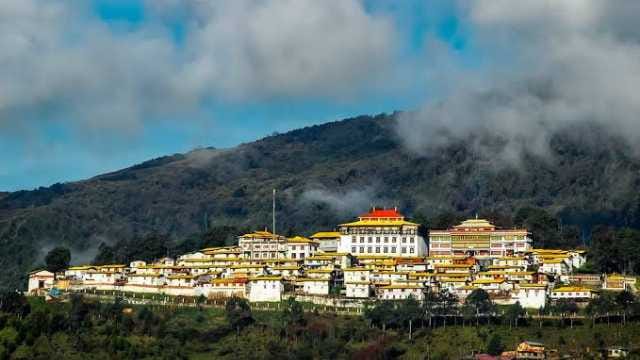
The Tawang Monastery, the biggest and oldest Buddhist monastery in the world and one of Tawang's key attractions, is also one of the largest in India. With more than 450 monks living there and a library filled with rare and antiquated volumes, the monastery was founded in the seventeenth century.
The Tawang Monastery, sometimes referred to as the Galden Namgey Lhatse, is a Buddhist monastery that can be found in the Indian state of Arunachal Pradesh's town of Tawang. With a capacity to house some 700 monks, it is both the largest monastery in India and one of the largest in the entire globe.
Merak Lama Lodre Gyatso, who is regarded as the 5th Dalai Lama's contemporary, constructed the monastery between 1680 and 1681. The monastery is a part of the Gelugpa sect of Mahayana Buddhism, which was established in the fourteenth century by Je Tsongkhapa.
The monastery has a substantial prayer hall, a reading room, and a number of additional smaller temples and shrines. The monastery's greatest draw is its prayer hall, or Dukhang, which is covered with exquisite murals and paintings that depict the lives of Buddha and other Buddhist deities. Rare and old scriptures and volumes, some of which are more than 400 years old, are kept in the monastery's library, which is on the upper floor.
The monastery also houses a massive statue of Lord Buddha that is thought to be one of the biggest in India. It is about 26 metres high. The statue, dedicated in 2013, was created in honour of the Dalai Lama's 78th birthday.
Thousands of people visit the Tawang Monastery each year as it is a significant Buddhist pilgrimage site. The monastery is a significant cultural and educational hub that also contributes significantly to the preservation and promotion of the local Buddhist tradition.
The Sela Pass

The Sela Pass, one of the world's highest motorable passes, is another well-liked destination in Tawang. The pass offers stunning views of the surrounding mountains and valleys.
Sela Pass is a high-altitude mountain pass located in the Himalayas in the Indian state of Arunachal Pradesh. It is at an elevation of 4,170 metres (13,700 feet) and connects the Tawang district with the rest of Arunachal Pradesh.
The Sela Pass is known for its breathtaking views of the surrounding mountains and valleys.The pass is only open during the summer, from May to October, and is usually covered in snow for the majority of the year. Due to its steep inclines, hairpin bends, and erratic weather, the road that traverses the Sela Pass is regarded as one of the world's most perilous and difficult routes.
The Sela Pass is home to the Sela Lake, a lovely high-altitude lake that is located at a height of 4,200 metres (13,780 feet) above sea level in addition to the breathtaking vistas. The nearby Monpa people regard the lake, which is surrounded by snow-capped peaks, as a sacred place. The pass and the travellers who cross it are said to be guarded by a mermaid who lives in the lake.
Because it is so near to the Chinese border, the Sela Pass is also crucial from a strategic perspective. To protect its borders, the Indian government has erected a number of military bases and facilities nearby.
The Jaswant Garh War Memorial
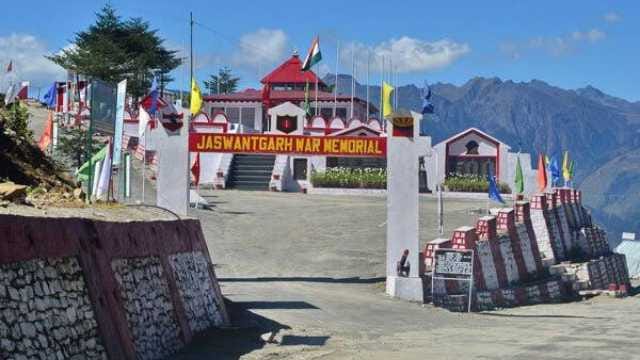
The Jaswant Garh War Monument honours the brave troops who fought and perished in the 1962 Sino-Indian War. In the Indian state of Arunachal Pradesh, it is situated close to the Sela Pass, around 14 kilometres from Tawang.
Rifleman Jaswant Singh Rawat, who is credited with holding off the Chinese soldiers single handedly for 72 hours during the war, is remembered by the memorial. His bravery and selflessness motivated his fellow soldiers to carry on fighting even though he was ultimately slain.
Rifleman Jaswant Singh Rawat's statue plus a modest museum housing his personal effects, pictures, and other artefacts make up the 1996-built memorial. The museum also has displays of the gear, uniforms, and weaponry worn by Indian soldiers throughout the conflict.
Thousands of tourists visit the Jaswant Garh War Memorial each year, making it a well-liked tourist destination. It stands as a testament to the valour, devotion, and patriotism of the Indian troops who fought and died in defence of their nation.
The Nuranang Waterfall
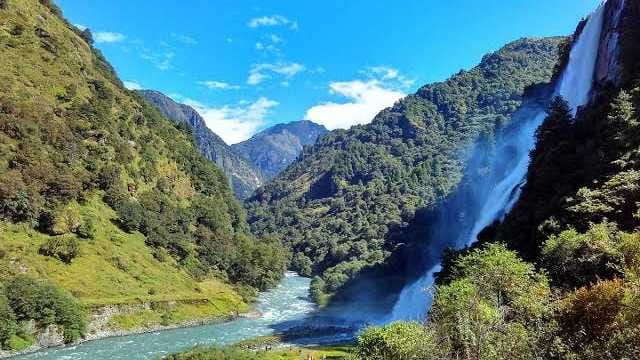
The stunning Nuranang Waterfall, often referred to as the Jang Falls, is situated in the Tawang area of Arunachal Pradesh, India. One of the top tourist destinations in the area, it is located about 40 kilometres from Tawang.
The Nuranang River, which flows through a thick forest before cascading down a sheer cliff, creates the Nuranang Waterfall. It rises in the Sela Pass. The waterfall, which is surrounded by lush vegetation and snow-capped mountains and has a height of about 100 metres (330 feet), is a beautiful sight to see.
The area around the waterfall is also home to several small villages and is inhabited by the Monpa tribe, who are the original inhabitants of the region. Visitors to the Nuranang Waterfall can also explore the nearby villages and interact with the locals to get a glimpse of their unique culture and way of life.
The Nuranang Waterfall is best visited during the monsoon season, from June to September, when the water flow is at its peak and the surroundings are lush and green. Visitors can also indulge in adventure activities such as trekking and camping in the surrounding areas.
Pankang Teng Tso Lake
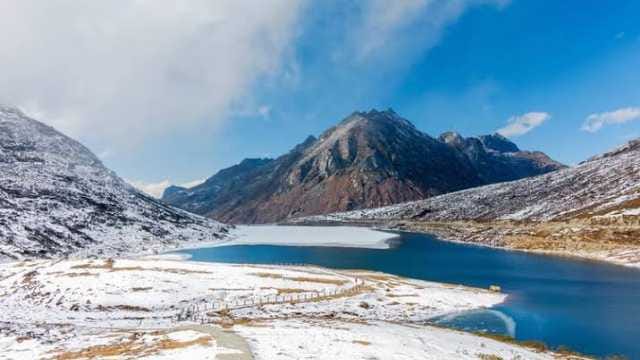
PT Tso Lake, often referred to as Pankang Teng Tso Lake, is a high-altitude lake which is one of the most beautiful in the area, is located at an elevation of 13,700 feet (4,175 metres) above sea level.
The Pankang Teng Tso Lake is fed by glaciers and snowmelt from the surrounding mountains and is known for its crystal-clear blue waters. The lake is surrounded by snow-capped peaks and lush greenery, making it a picturesque sight to behold. Visitors can also spot a variety of flora and fauna in the surrounding areas, including Himalayan yaks, musk deer, and snow leopards.
The lake is a significant Buddhist pilgrimage place and is revered by the indigenous Monpa people.
The greatest time to visit the Pankang Teng Tso Lake is in the summer, from May to October, when the weather is moderate and the lake is not covered in ice. Camping, hiking, and lake boating are just a few of the recreational options available to visitors. For those who enjoy nature and photography, the lake is a popular destination.
Gorichen Peak

One of Arunachal Pradesh's tallest mountains, the Gorichen Peak is situated in the state's West Kameng district in northeastern India. Sa-Nga Phu, which translates as "Kingdom of Deity" in the native tongue, is another name for it. The mountain is the highest point in the state of Arunachal Pradesh, rising 6,488 metres (21,286 ft) above sea level.
The Eastern Himalayan range's Gorichen Peak is encircled by snow-capped peaks, glaciers, and alpine forests. The summit is well-liked by mountaineers and adventure seekers because it is regarded as a difficult climb. Technical expertise, mountaineering gear, and erratic weather are all necessary for the ascent to the peak.
The Torgya and the Losar Festivals
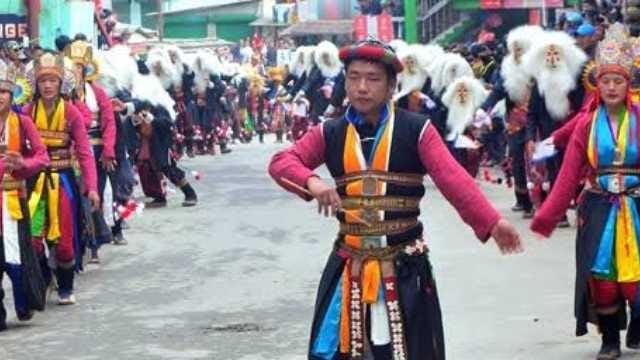
Two significant celebrations, the Torgya Festival and the Losar Festival, are observed in the Indian state of Arunachal Pradesh, primarily by the Monpa tribe, the area's indigenous occupants.
The three-day Torgya Festival is held in January to fend off evil spirits and to make wishes for happiness and health in the upcoming year. The Cham dances, which are performed as part of the celebration at the Tawang Monastery and are thought to drive out bad energy and introduce good energy in its place, are performed by the monks. The event concludes with the burning of an effigy depicting evil spirits in addition to food offerings and prayers to the gods.

The Tibetan New Year, or Losar Festival, is observed in either February or March depending on the lunar calendar. It is also known as the Tibetan New Year. Along with the local Tibetan community, the Monpa tribe observes the celebration. In addition to butter lamps being lit and greetings and gifts being exchanged, the holiday is characterised with food offerings and prayers to the gods. Family get-togethers and feasting are common throughout the holiday, which often include performances of Cham dances and traditional music.
These festivals are significant cultural occasions in Arunachal Pradesh and give tourists a special chance to get a taste of the community's customs and way of life. Guests are welcome to attend the events and take in their brilliant colours, sounds, and flavours.
Adventure sports including camping, hiking, river rafting, and mountain biking are also available to Tawang visitors. The closest airport is in Tezpur, some 317 kilometres from the town, and it is well connected to both the road and the air.